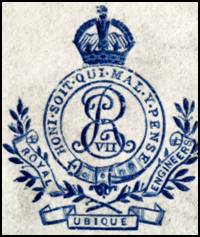
Figure 1. The Crest of the Corps of Royal Engineers.
(Image courtesy of S. Gase.)
26839
Quartermaster Sergeant
WILLIAM EDWARD ROGAN
Royal
Engineers
by
Lieutenant Colonel Edward De
Santis, MSCE, P.E., MinstRE
(1997, revised 2023)

Figure
1. The Crest of the Corps of Royal Engineers.
(Image
courtesy of S. Gase.)
INTRODUCTION
The primary source of information for this narrative is William Edward Rogan’s military service papers that were obtain from the Public Records Office (now The National Archives) in London in 1997. The records were found in War Office files WO97/5804. The original narrative was written in 1997 based on the information contained in the military service papers. It was revised the first time in 2004 based on additional information encountered at that time. A much greater source of information has recently been found on the internet; hence, the necessity for this revised narrative.
The family trees found on Ancestry.com provided the foundation for the information regarding Rogan’s family, his early life and his life after leaving the Army. These family trees removed much of the conjecture that was included in the earlier versions of Rogan’s story, especially much confusion associated with his family. All references are cited at the end of this narrative. Where no facts are referenced, it may be assumed that they came from one of these sources.
2. EARLY LIFE AND FAMILY INFORMATION
Early Life
William Edward Rogan was born on Portsea Island in the Sub-district of Landport in the County of Southampton on 16 May 1863.[1] He was the son of Captain James Rogan, Royal Artillery (1820-?) and Phoebe Rogan (1830-?), née Knowles. Following his early life through the various census taken in England, he lived with his parents in Portsmouth (at least until 1867) then at Southwick, Sussex to sometime between 1871 and 1891 when he became a boarder in the home of one James Phillips, a naval engineer, at 92 Lower Green in Maker, Cornwall. The residents at this address, besides James Phillips and Rogan, included Phillips wife Mary and his 8-year-old nephew James P. Avery.
In the 1891 Census of England Rogan’s occupation is shown as Marine Engineer, so it appears likely that he was employed by Mr. Phillips at that time. From his service papers Rogan claims to have been an Apprentice to a Mr. Holloway for a period of about 14 years, so just how this 14-year period fits into his 29 years before joining the Army is uncertain.
Family Information
William’s father, James Rogan, was born about 1820 in Nottingham, Nottinghamshire and was a Captain in the Coast Brigade of the Royal Artillery (see Addenda 1 and 2). He married Phoebe Knowles at St. Nicholas Church in Plumstead, London on 3 June 1850.
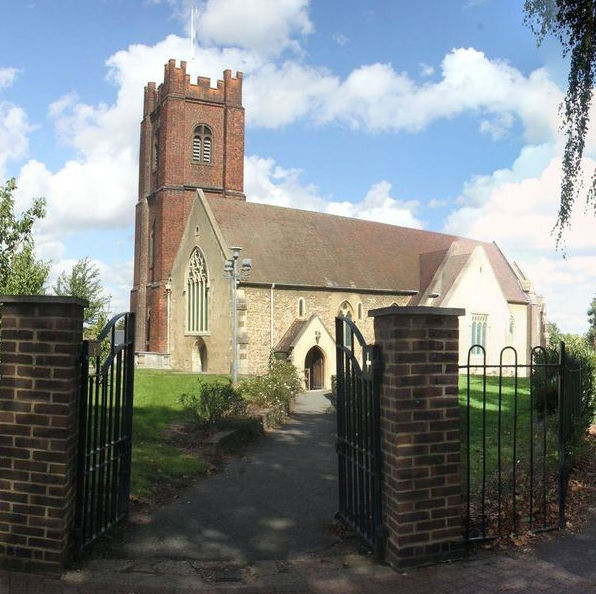 T
T
Figure
2. St. Nicholas Church, Plumstead.
(Image
courtesy of London Metropolitan Archives)
The Rogans were members of the Church of England. James and Phoebe had seven children, three sons and four daughters, only five of which are shown in the table below. Missing from the 1871 census are Jane Martha Rogan (1857-1922) and Annie Spalding Rogan (1858-1862). Annie had died at the age of 4 in 1862 on Portsea Island. Jane Martha Rogan is included in all the Rogan family trees on Ancestry.com and is shown as living in Southwick in 1871; however, she does not appear on the census form for that year. It is possible that she was just not in the home at 285 Colebrook Lane when the census was taken and she was not found at any other location during the time of the census.
1871 Census of England
Address: 285 Colebrook Lane, Southwick, Sussex.[2] |
|||||
Name and Surname |
Relation |
Marital Status |
Age |
Profession or Occupation |
Birthplace |
James Rogan |
Head |
Married |
37 |
Captain, Royal Artillery |
Nottingham, |
Phoebe Rogan |
Wife |
Married |
41 |
|
Ireland
|
Sophia Rogan (1) |
Daughter |
Single |
18 |
|
Leith, |
James Rogan (2) |
Son |
|
14 |
Scholar |
Mary’s Cray, |
Alfred Rogan (3) |
Son |
|
9 |
Scholar |
Portsmouth, |
William Rogan (4) |
Son |
|
7 |
Scholar |
Portsmouth, |
Frances Rogan (5) |
Daughter |
|
4 |
Scholar |
Portsmouth, |
TABLE NOTES:
(1) Sophia Ann Rogan (1852-?).
(2) James George Rogan (1854-1894).
(3) Alfred John Rogan (1861-1937).
(4) William Edward Rogan (1863-1947).
(5) Frances Sarah P. Rogan (1867-?).
3. PHYSICAL DESCRIPTION
At the age of 30 years and 3 months William Edward Rogan decided to join the Army. He was a man small in stature as described by the medical examination given to him at the time of his enlistment.
Height: |
5 feet 6-1/8 inches |
Weight: |
146 pounds |
Chest measurement: |
35 inches |
Complexion: |
sallow |
Eyes: |
brown |
Hair: |
dark brown |
4. RECRUITMENT, ENLISTMENT AND TRAINING
Recruitment
Rogan’s acceptance into the Army at the age of 30 for a first period of limited engagement requires some explanation. In 1884 a group of Warrant Officers and Non-Commissioned Officers was formed to assist officers of the Royal Engineers with Inspector of Works staff duties. This group was composed of individuals known as Military Mechanists (Steam and Hydraulics). Their duties, under the R.E. officers in charge of machinery, were the erection, maintenance and repair of all kinds of boilers and machinery, including machinery in Army Ordnance workshops, or in use by the Army Service Corps. The men to fill these positions were obtained by special enlistments of civilians of suitable trades and educational requirements who were given the rank of Company Sergeant Major on enlistment, and wore the uniform of this rank while learning their drill and military duties at the School of Military Engineering at Chatham. Following this basic or recruit training the men were put through a special course of instruction and then put on probation. Generally, promotion to the rank of Quartermaster Sergeant followed automatically after six years of service in the rank of Company Sergeant Major, while promotion to Warrant Officer was by selection to fill a vacancy on an establishment, as voted by Parliament. Ranks of Company Sergeant Major and above had a married establishment of 100 percent, and all could serve, if they wished to do so, to a total of 21 years of service and to qualify for a pension.[3]
This program apparently was appealing to Rogan as he decided to give up his civil practice as a Marine Engineer and join the Army. It should be noted that the term “engineer” was loosely used in the 19th century. There is no record to show that Rogan actually studied to be, or obtained and engineering degree. He could have been an individual who operated and/or maintained marine engines and by custom at the time was designated, or designated himself, to be a “Marine Engineer.” Whatever the case, the Army considered his experience to meet the requirements of the new Military Mechanist program of the Royal Engineers.
Early in August of 1892 he contacted Captain E.B. Williams, Adjutant of the 3rd Battalion, The Devonshire Regiment, who also served as the Recruiting Officer in the 11th Regimental District at Exeter. Captain Williams sent forward the necessary documents to the War Office at the Horse Guards in London in order to obtain approval to enlist Rogan under the special circumstances of the Military Mechanist program. On 9 August 1892 the War Office responded by approving Rogan’s application.[4] The Horse Guards approval was received at the 11th Regimental District in Exeter on the following day.
Enlistment
On 13 August 1892 Rogan was given a medical examination at Devonport, Devonshire. The examination was performed by Surgeon Major Myles of the Army Medical Corps. During the examination Myles described Rogan’s physical appearance as shown in Section 2 above. Myles also noted that Rogan had a “small right hernia” but that he was “otherwise fit.”[5]
Captain Williams forwarded the results of Rogan’s medical examination to the Adjutant General at the War Office on 15 August 1892. The War Office received Williams’s recommendation that same day and on the following day the Horse Guards informed Williams that Rogan had been “accepted as a Military Mechanist (Steam and Hydraulics), on probation” and that he should be sent to Chatham for his basic military training. Rogan obviously was placed in the program on probation so that his skills and experience as a Military Mechanist working with steam and hydraulics engines and equipment could be properly evaluated before he was given the full benefits of the new program. Up to this point the military authorities probably had only Rogan’s description of his competence and perhaps reports from people who had worked with him as a “Marine Engineer.”
On 19 August 1892 Rogan swore the oath of attestation at Plymouth and was enlisted for a period of 12 years with the Colours. His attestation was duly certified by Captain Williams of The Devonshire Regiment and Surgeon Major Myles certified his final medical examination. Captain Williams also certified his primary military examination. Rogan was assigned Regimental Number 26839 and was initially given the rank of Sapper. However, since he had been enlisted in the Military Mechanist program, he was promoted immediately to the rank of Company Sergeant Major, no doubt on probation.
Training
On 22 August 1892 CSM Rogan’s enlistment was certified by the approving field officer and on 24 August he arrived at the School of Military Engineering along with all his paperwork, ready to begin his training.
Having satisfied the requirements of the special enlistment criteria for Military Mechanist, at least from a probationary point of view, Rogan’s enlistment now proceeded along the same lines as for any other recruit wanting to join the Royal Engineers. However, it must have appeared strange to other new recruits at Chatham to see men wearing uniforms and insignia of Company Sergeant Majors learning drill and other military duties as prescribed by the Military Mechanist program.
After completing almost five months of training at Chatham, CSM Rogan received a Second-Class Certificate of Education on 14 January 1893. A Second-Class certificate was necessary for promotion to sergeant. It entailed writing and dictation from a more difficult work, familiarity with all forms of regimental accounting, and facility with proportions and interest, fractions and averages. The issuance of this certificate begs the question as to why Rogan would not have been proficient in these requirements if he truly was functioning as an “engineer” in civil life.
5. POSTINGS, ASSIGNMENTS AND CAMPAIGN SERVICE
Hong Kong (1893-1896)
After a total of 209 days of training at the School of Military Engineering, CSM Rogan departed England for Hong Kong, arriving there on 16 March 1893. While serving in Hong Kong, presumably in the Works Department, Rogan was awarded a First-Class Certificate of Education on 29 October 1895. First-class certificates were a great deal more difficult and were required for commissions from the ranks. Successful candidates had to read and take dictation from any standard author; make a fair copy of a manuscript; demonstrate their familiarity with more complicated mathematics, except cube and square root and stocks and discount; and as well prepare for examination in British history and geography. First-class certificates were awarded on the results of periodic examinations held by the Council (later Director-General) of Military Education. Again, the question arises as to whether Rogan should have already demonstrated his ability with these subjects if he truly was an “engineer” in civil life. The fact that the Army required him to pass examinations in these subjects reinforces the idea that the term engineer was loosely used in Great Britain at this time. The fact that CSM Rogan was able to qualify for a First-Class Certificate of Education after less than three years from the date of receiving the Second-Class certificate is indicative of his intelligence and of his prior education and training before enlistment.
Devonport (1896-1898)
After serving 2 years and 328 days in Hong Kong, CSM Rogan returned to England on 7 February 1896 and was posted to Company “B” of the Royal Engineers Training Battalion at Chatham. Following a short tour of duty at Chatham he was posted to the Western District of the Southern Command with headquarters at Raglan Barracks in Devonport, where he married a local girl and was immediately placed on the married establishment.
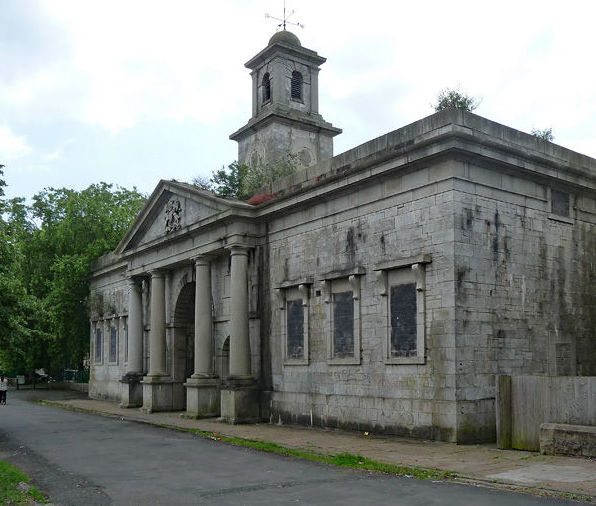
Figure
3. Raglan Barracks, Devonport.
(Image
courtesy of Stephen Richards, via Wikipedia)
NOTE: The barracks were designed by Captain Francis Fowke to accommodate two entire regiments in transit for operations overseas and were built between 1853 and 1856. Named after FitzRoy Somerset, 1st Baron Raglan, the barracks were built in the colonial style with flat roofs and verandas. The site, which had a huge parade ground, was first occupied by the 96th Regiment of Foot in December 1858. The Prince of Wales presented new Colours to the 2nd Battalion The Duke of Cornwall's Light Infantry at the barracks in November 1887 and the Duke of Cambridge presented Colours to the 2nd Battalion, The Somerset Light Infantry there in May 1895. This battalion was in the barracks during the time that Rogan served there.
The Curragh, Ireland (1898-1902)
On 1 June 1898 Rogan elected to receive a messing allowance in accordance with Special Army Orders dated 2 April 1898. By virtue of his married status this allowance was authorized to him by his commanding officer, Major W.F.H. Stafford, R.E.[6] while he was stationed in Ireland. His wife was not with him in Ireland. She was living in Devonport where their first child was born.
On the anniversary of his sixth year of service, CSM Rogan met all the terms of his special enlistment and probation period as a Military Mechanist. On 19 August 1898 Major Stafford promoted Rogan to the rank of Quartermaster Sergeant (Military Mechanist). While stationed in Ireland, QMS Rogan was headquartered at the Office of the Inspector of Works at Island Bridge Barracks in Dublin.[7]
Liverpool (1902-1913)
While the Boer War was raging in South Africa, QMS Rogan continued his service in Ireland and then returned to duties in the Liverpool area. His second child, and first son, was born in Manchester while Rogan was serving at Liverpool. With his family growing, QMS Rogan found it advantageous to opt for the provisions of Army Order 66 of 1902 respecting the receipt of service pay from Class 1 at 7 pence per day. Service Pay in addition, to their regular pay, was granted to men in the Royal Engineers who demonstrated proficiency in their military trades. Service Pay was awarded in seven classes, with Class I being the highest. The details of these provisions are rather obscure; nevertheless, QMS Rogan came under them for pay purposes as of 1 April 1904.
On 8 August 1904, with a total of 11 years and 355 days in the Army, QMS Rogan elected to re-engage to complete 21 years of service. He was serving at Liverpool at the time and the Commander Royal Engineers (CRE) there endorsed his application to re-enlist. QMS Rogan was examined at Manchester by Captain M. Harrison, Royal Army Medical Corps, and was declared fit for re-enlistment on 13 August 1904. His re-engagement was approved by the CRE Liverpool on 15 August. QMS Rogan continued serving at Liverpool after his re-engagement. His wife gave birth to their second son at Manchester on 4 January 1908.
On 18 August 1910 QMS Rogan completed 18 years of service with the Colours and was awarded the Army Long Service and Good Conduct Medal by the CRE Liverpool, in accordance with Army Order 92 of 1911. This was the only medal that he would receive during his Army service. The medal, presently in the possession of the author, will be discussed in greater detail in Section 9 of this narrative.
As a Military Mechanist, QMS Rogan served in the Establishment for Engineers Services of the Royal Engineers. The term Establishment for Engineer Services (E.E.S.) or Royal Engineer Works Service had been used for a number of years to describe the duties of the Royal Engineers in connection with a number of different services, such as;
(1) Building construction and the use of materials. This establishment dealt with the construction of fortifications, but by and large its greatest responsibility was in the area of the construction and maintenance of barracks. Other works undertaken by the Establishment included hospitals and Army Ordnance buildings. With regard to the latter, the work included not only the buildings themselves, but also the provision and maintenance of fixed machinery and the construction and maintenance of magazines and buildings for the storage of explosives, with special attention to precautions against fire and protection against lightning.
(2) Support of the Army Service Corps. The E.E.S. was also involved with other buildings to include bakeries, stores, transport sheds and workshops. Special facilities such as refrigeration plants were also provided at Gibraltar and Malta and at other tropical locations. Many other buildings, such as churches, schools, offices, quarters for Commanding Officers and certain Staff Officers, were also provided by the E.E.S. Other essential services of the Establishment included the charge of military cemeteries and burial grounds, the preparation of graves and the appointment and supervision of caretakers.
(3) Military Lands. There was an organization within the E.E.S. responsible for the control of “Military Lands.” This term included the land on which the barracks and fortifications were constructed, along with roads, parades and recreation grounds. Closely allied to the control of “Military Lands” was the provision of rifle and artillery ranges.
(4) Electrical Branch. One of the special branches within the E.E.S. included the Electrical Branch which consisted of Defence Electric Lights, Telegraphs, Telephones, and Miscellaneous Electrical Services. The largest sub-element of the Electrical Branch was the Submarine Mining Service, which was responsible for the mine defences and also for the defence electric lights and electrical communications in the defended ports throughout the British Empire. Other miscellaneous electrical services included barracks lighting and protection of buildings against lightning.
(5) Mechanical Branch. A second special branch of the E.E.S. was the Mechanical Branch, with its responsibility for installation and maintenance of engines, boilers and machinery used with pumping and heating plant, and machinery used in Royal Engineers and Ordnance workshops. Other special branches of the Establishment were the Mechanical Transport Branch and the Railway Branch.
Rogan probably was employed in the first of the branches described above where he was employed in the Liverpool area as the Inspector of Works Department Iron Structures in the Western and Scottish Commands, a position that he held for the last 11 years of his service. In that capacity he was responsible for the inspection during manufacture of steel structures of all types, and of machinery, including cranes and boilers. He also was responsible for the testing of the materials from which these structures and machinery were made. During this period he was stationed at the Royal Engineers Office, CRE Liverpool District at 14 Elliott Street in Liverpool.[8] This office was the subordinate headquarters to the R.E. Office at Watergate House in Chester, which was the location of the Office of the Inspector of Works for the Western Command.[9] When performing his duties in Scotland he was assigned to the Office of the Inspector of Works for the Scottish Command at the Headquarters, Royal Engineers Office, 22 North Bridge Street in Edinburgh.[10]
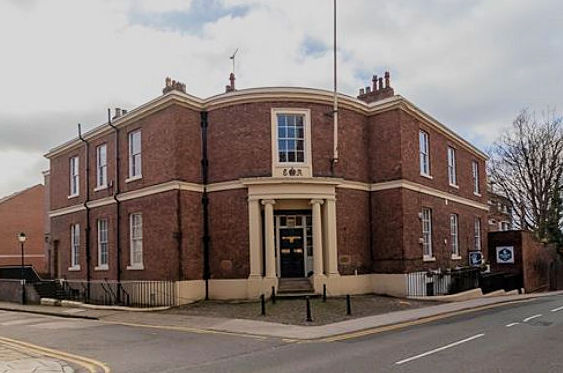
Figure
4. Watergate House, Chester.
(Image
courtesy of Wikipedia)
NOTE:
At
the time that Rogan was serving at the Royal Engineers Office, in the
office of the CRE Liverpool, his office was subordinate to the
Inspector of Works for the Western Command with headquarters at the
Watergate House in Chester.
The
photograph shows the Watergate House building, circa
2022.
Based on the information contained in his service papers, QMS Rogan’s service is summarized in the table below. Some of the dates and the periods of service are approximate as they were not clearly specified in his papers.
Summary of Service
Station |
From |
To |
Years & Days |
Chatham, Kent |
19 August 1892 |
16 March 1893 |
209 days |
Hong Kong |
17 March 1893 |
6 February 1896 |
2 years & 328 days |
Devonport |
7 February 1896 |
31 May 1898 |
2 years & 115 days |
Ireland |
1 June 1898 |
7 August 1904 |
6 years & 37 days |
Liverpool |
8 August 1904 |
18 August 1913 |
9 years & 11 days |
Total Service: |
21 years |
||
6. DISCHARGE
The proceedings for QMS Rogan’s discharge were initiated on 31 July 1913. On this date his discharge paperwork was reviewed and found to be correct by Colonel Richard Fielding Edwards, R.E.,[11] the CRE Liverpool. QMS Rogan signed these papers on the same day and Colonel Edwards confirmed his discharge for 18 August 1913. Additionally, Colonel Edwards completed a Sobriety Certificate in accordance with paragraph 423 of King’s Regulations. In QMS Rogan’s case, the purpose of this certificate was to verify his good habits with regard to drink to any future employer. The Proceedings on Discharge were received by the Royal Engineers Record Center at Chatham on 1 August 1913. On 15 August Rogan was awarded the gratuity of £5 to which he was entitled by virtue of earning the Long service and Good Conduct Medal.
Rogan’s discharge became effective on 18 August 1913. The CRE Liverpool certified payment of the £5 gratuity on the following day. This certification in letter form was received by the Royal Engineers Record Center on the 20th and was forwarded to the Royal Hospital at Chelsea the following day. The hospital received the letter on 22 August, thereby closing the book on the military service of Quartermaster Sergeant William Edward Rogan.
On his discharge, QMS Rogan was described as being 51 years and 3 months of age. He was 5 feet 6 inches tall with a chest measurement of 43 inches. His complexion was described as dark. He had brown eyes and grey hair and was still noted to have a “small right hernia.”
QMS Rogan and his family intended to reside at 118 Ladybarn Lane in Fallowfield, Manchester upon his leaving the Army. At the time of his discharge his children were ages 15, 11 and 5 years, rather a young family for a 51-year-old father.
William Edward Rogan served his country well and faithfully for 21 years. He entered the Army near the end of the reign of Queen Victoria and served throughout the reign of King Edward VII and three years into the reign of King George V. His only service abroad was a period of time just short of three years in Hong Kong. He saw no active service and therefore was not entitled to any campaign medals. His discharge came about a year prior to the start of the Great War of 1914 to 1918. His service records do not indicate that he was called back into the Army to serve in any capacity during that horrendous conflict. In all probability his age and family status would have kept him out of the war in any case.
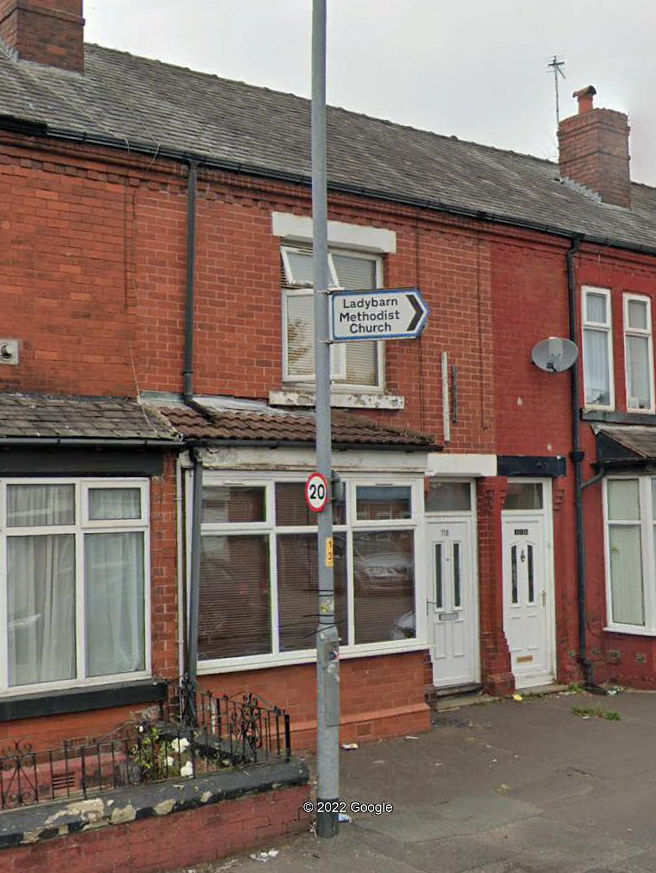
Figure
5. The Rogan Home at 118 Ladybarn Lane in Fallowfield,
Manchester.
(Image
courtesy of Google Earth)
NOTE: The building is the one located directly behind the light post, second white door from the right. The structure could well date back to 1913.
______________________________________________________________
The following sections are presented in tabular form to summarize Rogan’s promotions, appointments, military training and qualifications and the medal that he was awarded during his time in the Army. They are provided to give the reader easy access to these aspects of his military career. The tables are followed by sections dealing with his marriage, personal information and post-service life.
__________________________________________________________________________
7. PROMOTIONS
Date of Promotion
|
|
19 August 1892 |
Sapper, upon enlistment in the Royal Engineers. |
19 August 1892 |
Company Sergeant Major, immediate appointment under the Military Mechanist program. |
19 August 1898 |
Promoted to Quartermaster Sergeant. |
8. CONDUCT AND MANNER
There were no disciplinary
actions listed in QMS Rogan’s military service papers. At the
time of his discharge his conduct and manner were described as
“exemplary” and he was considered to be “thoroughly reliable
and competent” with regard to employment in civil life.
9. MEDALS, AWARDS AND DECORATIONS
On 18 August 1910 Quartermaster Sergeant Rogan completed 18 years of service with the Colours and was awarded the Army Long Service and Good Conduct Medal by the CRE Liverpool, in accordance with Army Order 92 of 1911.
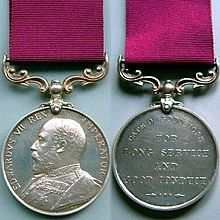
Figure
6. The Army Long Service and Good Conduct Medal (EVIIR).
(Image
from the author’s collection)
Rogan’s medal is named to him on the rim in impressed upper case letters as follows:
26839 Q.M.SJT. W.E.ROGAN. R.E.
10. EDUCATION AND QUALIFICATIONS
Education
No information regarding Rogan’s civil education was uncovered during the research for this project. His military education included two certificates of education:
Second-Class Certificate of Education awarded on 14 January 1893.
First-Class Certificate of Education awarded on 29 October 1895.
Qualifications
Served an Apprenticeship for 14 years under a naval engineer and a marine engineer.
Parents
Father: James Rogan was a Captain in the Royal Artillery at the time of William’s birth.[12] The Monthly Army List of April 1861 indicates that Captain James Rogan was serving in the Coast Brigade of Artillery. He had been commissioned in the Royal Artillery as a Lieutenant (Deputy Assistant Commissary) on 1 April 1854. He saw active service in the Crimean War and was present at the siege of Sebastopol from 1854 to 1855. He was awarded the Crimean War Medal with clasp [SEBASTOPOL] as well as the Turkish Crimean Medal.[13] James Rogan’s date of rank as a Captain is given as 4 November 1859 in the Monthly Army List of April 1861, p. 56. His name also is found in the January 1868 List (p. 63). In the July 1873 Army List (p. 755) he is shown as being on half pay.
In 1861 he was living with his family at Portsea, Hampshire, in 1871 in Southwick, Sussex and in 1881 at Kingston-by-Sea in Sussex. The date of his death is not known.
Mother: Phoebe Rogan, née Knowles was born in Ocher, Ireland about 1830. It appears that while her husband was away in the Crimea between 1854 and 1855, Phoebe resided in Woolwich, Kent. Following Captain Rogan’s return from the Crimea, Phoebe lived with her husband and children in Portsea, Southwick and Kingston-by-Sea. In 1891 she was again living in Southwick, presumably after the death of her husband and by 1901 she had returned to Portsmouth. The date of her death is unknown, but some family trees appear to indicate that she lived beyond 100 years.
Marriage
William Edward Rogan married Mary Ann Dolphin at Devonport on 15 June 1897. Mary Ann Dolphin was born in Devonport in about 1872, the daughter of Joseph and Ellen Dolphin. William and Mary Ann had three children: Winifred Dorothy (“Dot”), James George Lockington and William Clifford Hedley.
Children
Winnifred Dorothy (“Dot”) Rogan (1891-?) was born on 6 July 1898 in Devonport while her father was serving in Ireland. On 22 April 1919 she married Harold John Inns (1894-?) in St. Mark’s Parish, South Farnborough, Surrey. On 1 June 1921 she is shown in the 1921 Census of Canada as residing in Montreal West, Quebec, Canada. It appears that Winnifred and Harold did not have any children. Winnifred’s date of death is not known.
A Medal Index Card exists for 302909 Corporal Harold John Inns, Canadian Garrison Artillery. The card shows that Inns was commissioned a 2nd Lieutenant in the Royal Garrison Artillery on 18 August 1917 and that he was posted to a unit in France on 30 March 1918. For his service during the Great War he was awarded the British War Medal and Victory Medal.
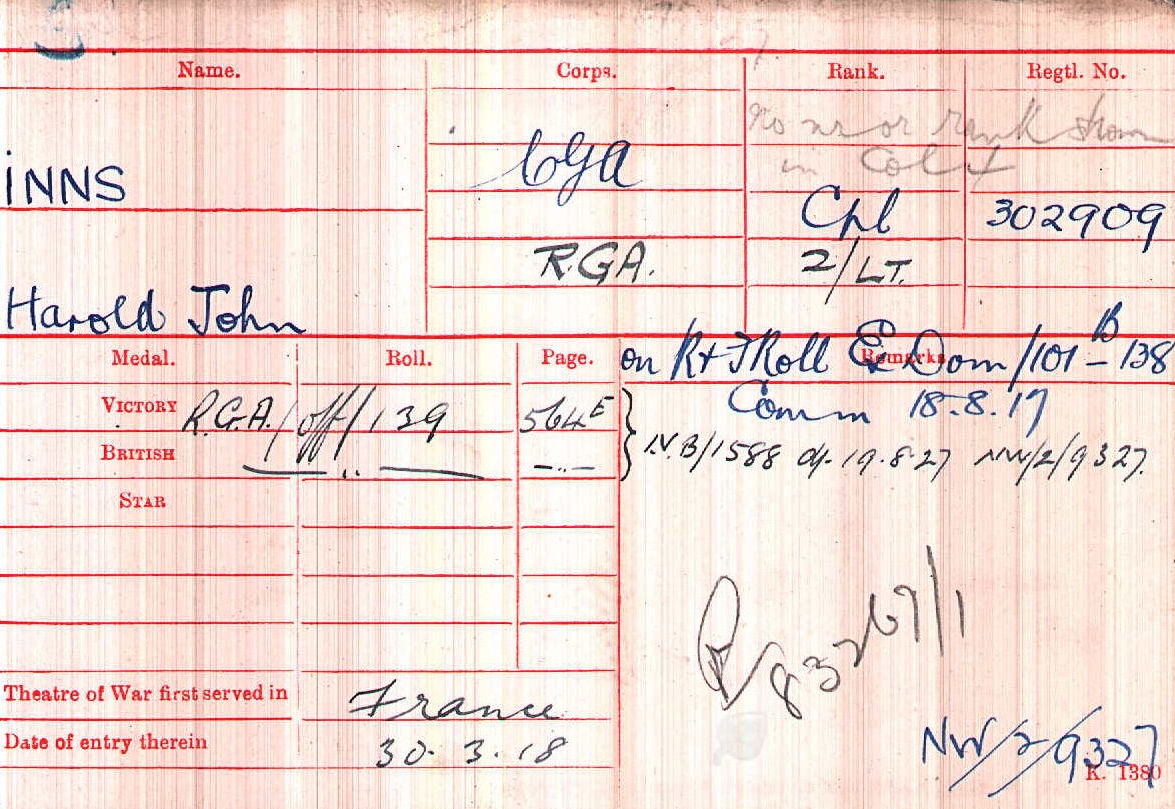
Figure
7. The Medal Index Card of Harold John Inns.
(Image
courtesy of Ancestry.com)
James George Lockington Rogan (1902-?) was born in Manchester on 9 December 1902. James emigrated to Canada, arriving in St. John, New Brunswick in April 1923. Based on his year of birth he would have been too young to have served in the Great War.
James married Hazel Marth Craig (1903-?) in Toronto, Ontario on 10 August 1933 and they appear to have remained in Canada. James and Hazel did not have any children.
William Clifford Hedley Rogan (1908-1986) was born in Manchester on 4 January 1908. William married Muriel A. Stigant (1919-?) in Woolwich, Kent in 1942. In 1945 William and Muriel were living at 15 Dartmouth Court in Lewisham, London. William died in 1986 in Bromley, Kent at the age of 78. It appears the William and Muriel did not have any children.
William would have been 31 years of age when World War 2 began. It is possible that he might have served in that war. If they lived in London during 1940 to 1941 they would have experienced the German blitz bombing campaign during those early years of the war.
Siblings
As previously stated in this narrative, William Edward Rogan had two brothers and four sisters.
Sophia Ann Rogan (1852-?) was born on 8 May 1852 in Leith, Midlothian, Scotland. She appears to have remained unmarried her entire life and her date of death is not known.
James George Rogan (1854-1894) was born at 39 Brewer Street in Woolwich, Kent on 30 September 1854. He did not marry during his lifetime. In 1881 he resided in South Shoebury, Essex and in 1891 he lived in West Tilbury, Essex. He died in Gravesend, Kent in 1894 at the age of 40.
The Army Lists show that a J.G. Rogan was serving in the late 19th century as a Sergeant Major in the Royal Artillery with his date of Warrant being 1 April 1884. At the time, Sergeant Major Rogan was serving as an Instructor in Gunnery at Shoeburness.[14] It appears that on 30 April 1890 SGM J.G. Rogan was commissioned a Lieutenant in the Royal Artillery and was assigned to the 10th Battery, Coast Brigade.[15] As no Lieutenant J.G, Rogan appears in the Monthly Army List of March 1898, it could well be because he died in 1894; hence, the SGM J.G. Rogan could well be William’s younger brother. The fact that J.G. Rogan served in the Coast Artillery may also indicate that he followed in his father’s footsteps.
Jane Martha Rogan (1857-1922) was born on 3 January 1857 in St. Mary Cray, Kent. She never married and died at age 65 at 39 Clarendon Road in Southsea, Hampshire on 14 April 1922. In her will she left her effects, amounting to £4170-12s-8d to her brother William Edward Rogan, who at the time was an inspector for the Air Ministry. The money that she left her brother was sizeable, amounting to about $377,300 US in 2022 currency.
Annie Spalding Rogan (1858-1862) was born in Lancing, Sussex. She lived with her parents on Portsea Island, Hampshire where she died at the age of 4 years probably of an illness.
Alfred John Rogan (1861-1937) was born in Portsmouth, Hampshire on 9 April 1861. He married Julia Phoebe Martin Easy (1856-1947) at Brighton, Sussex in 1890. They had two daughters. By 1901 Alfred and Julia were living in Canton, Wales and in 1911 they resided in Cardiff. Alfred died in Cardiff in 1937 at the age of 76. Julia died at 333 Cowbridge Road, Canton, Cardiff on 12 June 1947 at the age of 91.
Frances Sarah P. Rogan (1867-?) was born in Portsmouth, Hampshire and appears to have resided with her parents during her early years. There is no indication that she ever married and the date of her death is not known.
Personal Information
William Edward Rogan was a Freemason. On 9 February 1891 he was initiated into the Meridian Lodge at Millbrook, Cornwall. At the time he was a 29-year-old Engine Fitter and had not yet joined the Army. This occupation of Engine Fitter shown on the Meridian Lodge register perhaps gives a clearer picture of what Rogan considered to be a naval engineer or a marine engineer. He was in fact a mechanic who worked on marine engines. On 8 November 1893 Rogan was initiated into the United Service Lodge in Hong Kong. His occupation is shown in the register as Company Sergeant Major, R.E. In 1917 he was initiated into the Ad Astra Lodge in London. Ad Astra Lodge, No. 3808, was formed to bring together members of the Air Inspection Directorate who had come from all over the country to design airplanes for the war effort.[16]
12. POST SERVICE LIFE
Residences
The London Electoral Registers from 1832-1965 provide the following information regarding Rogan’s residences:
· In 1911 he and his family resided at 118 Ladybarn Lane in Lancashire with his occupation being listed as “Inspector.” This is the same address that he gave as his intended place of residence when he left the Army, only then he listed it as 118 Ladybarn Lane, Fallowfield, Manchester.
· From 1925 to at least 1931 he and his wife lived at 23a Blessington Road in Lewisham in southeast London. [17]
· During 1936 and 1937 his address is listed as 23 South Vale House in Lewisham. It may be that 23 South Vale House and 23a Blessington Road are the same residence.
The 1939 England and Wales Register shows William E. Rogan and his wife Mary living in Plymouth, Devon with another married couple; William A. and Jane Law. Rogan’s occupation is shown as Royal Engineers (Retired). William Law’s occupation is shown as Shipwright (Retired). William Rogan was about 76 years old when this register was published.
As noted above, upon her death in 1922 William’s sister left her effects to him while he was employed as an inspector for the Air Ministry, probably the Air Inspection Directorate. It is likely that he obtained this position because of his experience during the Great War. There is no indication in available records regarding how long he may have held this position. He may have been so employed up to the beginning of World War 2 or maybe until that war ended in 1945.
Final Years
William Edward Rogan died on 26 November 1947 and was cremated on 28 November in Southwark, London. At the time of his death his residence was 48 Adelaide Avenue, Brockley, London. Probate of his will took place in London on 15 April 1948 with his effects of £1635-19s-8d going to his son, William Clifford Hedley Rogan, branch manager.
On the same page of the 1948 Probate Calendar, and just above the listing for William Edward Rogan, is the following listing:
Rogan Mary Ann of 48 Adelaide-avenue Brockley London (wife of William Edward Rogan) died 23 November 1947 Administration (with Will) London 12 April to William Clifford Hedley Rogan branch manager. Effects £2065-0s-11d.
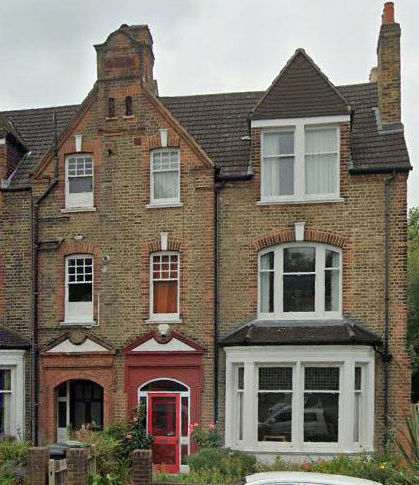
Figure
8. The Rogan Residence at 48 Adelaide Avenue, London.
(Image
courtesy of Google Earth)
William Edward Rogan and his wife Mary Ann died at the same address just 3 days apart! Was this a coincidence or were their deaths the result of any accident? This puzzle was solved when copies of their death certificates were obtained from the General Register Office.
Mary Ann Rogan’s death was registered in the Sub-District of Sydenham in the Metropolitan Borough of Lewisham on 23 November 1947 by M.J. Harrison, the Deputy Registrar. The death certificate shows that she died at 48 Adelaide Avenue at the age of 75 years, of 1a) Passive congestion of the lungs and 1b) Myocardial degeneration. Her death was certified by W. O’Brien, M.B. She is shown as “Wife of William Edward Rogan, retired engineer." The informant of her death is shown as her son, “C.H. Rogan,” presumably William Clifford Hedley Rogan, who did not use his first name, William. His address is given as 848 Sidcup Road [London] S.E.9.
William Edward Rogan’s death was registered in the Sub-District of Sydenham in the Metropolitan Borough of Lewisham on 26 November 1947 by M.J. Harrison, the Deputy Registrar. The death certificate shows that he also died at 48 Adelaide Avenue at the age of 85 years, of 1a) Cerebral hemorrhage and 1b) Arterial sclerosis. His death also was certified by W. O’Brien, M.B. Rogan’s profession is shown as “Retired Engineer.” The informant of his death again is shown as his son, “C.H. Rogan.” Obviously, Rogan’s health was very poor at the time of his wife’s death. Depression caused by losing her may very well have attributed to his own demise – maybe he just gave up living.
It is difficult to imagine how their son William must have felt, having to deal with the death of both of his parents within three days. In addition, he was the recipient of both of their legacies, which amounted to a total of £3700-19s-19d. That would be about $201,300 US in 2022 currency.
ADDENDUM 1.
Certified Copy of an Entry of Marriage, MXA
245275, General Register Office,
17 October 1997
The marriage certificate of William Edward Rogan and Mary Ann Dolphin shows that they were married on 15 June 1897 at the Parish Church in Stoke Damerell at Devonport. Mary Ann Dolphin was only 25 years old at the time, 10 years junior to Rogan. At the time of their marriage the Rogans were residing at 5 Donegal Terrace in Devonport.[18]
The marriage was witnessed by Fred A. Beall (perhaps a friend of Rogan's and fellow Sapper) and Jane Dolphin (maybe Mary Ann's mother or sister).
Rogan's father, James Rogan, is listed on the certificate as a Captain in the Royal Artillery. Mary Ann's father, Joseph Lockington Dolphin, is listed as a Pensioner, Royal Navy - Dolphin being a perfect name for an old salt.
A check of the Army Lists for the period shows that a J. G. Rogan[19] was serving at the time as a Sergeant Major in the Royal Artillery, the date of his Warrant being 1 April 1884. At the time, Sergeant Major Rogan was serving as an Instructor in Gunnery at Shoeburness.[20] During this same period a Warrant Officer J. Rogan was also serving as the Bandmaster of the 2nd Battalion, Royal West Surrey Regiment. It is unlikely that this latter Rogan would have become an officer in the Royal Artillery. However, it is quite likely that a Warrant Officer of the Royal Artillery (i.e., J.G. Rogan) would be commissioned in that same Corps.
It appears that on 30 April 1890 SGM J.G. Rogan was commissioned a Lieutenant in the Royal Artillery and was assigned to the 10th Battery, Coast Brigade.[21] He could certainly have been promoted to the rank of Captain sometime before the marriage of William Edward Rogan in 1897. J.G. Rogan is not listed in the Monthly Army List for March of 1898. In fact, according to family trees found on Ancestry.com, James George Rogan died in 1894.
ADDENDUM 2.
A Certified Copy of an Entry of Birth, BXBY
296229, for William Edward Rogan, General Register Office, London, 22
October 1997.
The birth certificate shows that William Edward Rogan was born on 16 May 1863 and not in May of 1862 as would be estimated from his enlistment papers. Rogan may not have known in which year he was born or the recruiting officer or non-commissioned officer preparing the enlistment paper may have made an error. Errors of this type were not uncommon in the 19th century. In either case, it appears that Rogan was one year younger than indicated on his enlistment papers at the time when he joined the Royal Engineers.
The certificate indicates that Rogan was born at 2, The Ferns, in Southsea and that his father was James Rogan, a Captain in the Royal Artillery, and his mother was Phoebe Rogan (formerly Knowles). The birth was registered on 18 June 1863 at Portsea Island in the sub-district of Landport, in the County of Southampton.
The birth certificate raises a question concerning James Rogan. As noted in Addendum 1, a Sergeant Major J. G. Rogan, R.A. appears in the Army List for April 1890. SGM Rogan was commissioned in May of 1890 and would have probably been a Captain by the date of W.E. Rogan's marriage in 1897. However, as discussed in Addendum 1, certain logical assumptions regarding J.G. Rogan's total service and age on enlistment do not fit the timeline very well for J.G. Rogan to have been W.E. Rogan's father. It is more likely that he was he older brother. In fact, the Rogan family tree encountered on Ancestry.com in 2022 indicates that James George Rogan (1854-1894) was indeed William Edward Rogan’s brother.
The birth certificate indicates that James Rogan (1820-?) was already a Captain at the time of his son's birth in 1863. The Monthly Army List of April 1861 indicates that a Captain James Rogan was serving in the Coast Brigade of Artillery. This Captain Rogan was commissioned in the Royal Artillery as a Lieutenant (Deputy Assistant Commissary) on 1 April 1854. He saw active service in the Crimean War and was present at the siege of Sebastopol from 1854 to 1855. He was awarded the Crimean War Medal with clasp [SEBASTOPOL] as well as the Turkish Crimean Meda1.[22] James Rogan's date of rank as a Captain is given as 4 November 1859.[23] His name is also found in the January 1868 List (p. 63). In the July 1873 Army List (p. 755) he is shown as being on half pay.
It is also significant to note that Captain James Rogan (the father) and Captain J.G. Rogan both served in the Royal Artillery and both served in the Coast Brigade. While this could certainly be mere coincidence, it appears more likely to be the case of the oldest son following in his father's footsteps.
REFERENCES:
Army Lists
Monthly Army List, April 1861, p. 56.
Monthly Army List, April 1890, p. 777b
Monthly Army List, May 1890, p. 144a.
Monthly Army List, March 1898.
Hart’s Army List, 1864, p. 77.
Books
BAKER BROWN, W. History of the Corps of Royal Engineers, Volume IV. The Institution of Royal Engineers, Chatham, Kent, 1952.
Census
1871 Census of England, RG 10/1090.
1891 Census of England, RG 12/1806.
1901 Census of England, RG 13/2109.
1911 Census of England and Wales.
1921 Census of Canada.
1939 Register of England.
Documents
Freemason Lodge Registers
(a) Meridian Lodge, Millbrook, 1891.
(b) United Service Lodge, Hong Kong, 1893.
(c) Ad Astra Lodge, London, 1917.
2. Probate Calendar, 1948.
3. Certified Copy of an Entry of Birth, The General Register Office, BXBY 296229, dated 22nd October 1997 (original dated 16th May 1863).
4. Certified Copy of an Entry of Marriage, The General Register Office, MXA 245275, dated 17th October 1997 (original dated 15 June 1897).
5. Certified Copy of an Entry of Death, William Edward Rogan, 26 November 1947.
6. Certified Copy of an Entry of Death, Mary Ann Rogan, 23 November 1947.
Family Tree (Ancesty.com: M_Kingham)
William Edward Rogan (principle character).
James Rogan (father).
Phoebe Knowles (mother).
Mary Ann Dolphin (wife).
Winifred Dot Rogan (daughter).
James George Lockington Rogan (son).
William Clifford Hedley Rogan (son).
Internet Web Sites
UK, Burial and Cremation Index, 1576-2014.
London, England, Electoral Registers, 1832-1965.
London Metropolitan Archives Collection Catalogue.
Ragland Barracks, Devonport by Stephen Richards.
Frontline Ulster.
Maps
Motorists Atlas of Great Britain, 1984.
Geographers’ A-Z Map Co. Ltd., Street Atlas of Liverpool.
Bartholomew City Plan of Edinburgh.
ERA-MAPTEC, Ltd. City Map of Dublin.
Periodicals
The Royal Engineers List, February 1912.
Soldier’s Service Papers (WO97/5804)
Short Service Attestation, Army Form B. 267.
Description on Enlistment.
Descriptive Return, Army Form B. 203.
Letter from HORSE GUARDS, WAR OFFICE to Officer Commanding 11th Regimental District, dated 9 August 1892.
Re-Engagement Paper, Army Form B. 136.
Proceedings on Discharge, Army Form B. 268.
Sobriety Certificate, Army Form D. 489.
Letter from the C.R.E. Liverpool District to The Secretary, Royal Hospital, Chelsea, dated 19 August 1913.
Statement of Services. (1)
Statement of Services. (2)
Military History Sheet.
Letter from the Officer in Charge of Royal Engineer Records, Chatham, to the Royal Hospital, Chelsea, dated 23 August 1913.
Trade and Special Qualifications.
ENDNOTES:
[1] Certificate of birth.
[2] This address appears to no longer exist in the U.K.
[3] BAKER BROWN, 1952, pp. 178-179.
[4] War Office Form F & T 500 8-91.
[5] Army Form B. 267 (Description on Enlistment).
[6] Later, Lieutenant Colonel, CB, a veteran of the Afghan Campaign of 1878.
[7] Royal Engineers Monthly List, February 1912, p. xxiii.
[8] This address is now a major shopping mall.
[9] Ibid.
[10] Ibid.
[11] Later, Brigadier General. CMG 1917; Born October 1866; Educated: Cheltenham and Royal Military Academy Woolwich; Lieutenant, Royal Engineers 1885; Captain, 1894; Major, 1902; Lieutenant Colonel, 1910; Colonel,1913.
[12] William’s certificate of birth.
[13] Hart’s Army List, 1864, p. 77.
[14] Monthly Army List, May 1890, p. 144a.
[15] Monthly Army List, April 1900, p. 777b.
[16] Ad Astra Lodge internet web site.
[17] This address now consists of a row of modern apartment buildings.
[18] This address does not appear to exist in Devonport anymore.
[19] This man was determined to be James George Rogan, the brother of William Edward Rogan, by a search of family trees on Ancestry.com in September 2022.
[20] Monthly Army List, May 1890, p. 144a.
[21] Monthly Army List, April 1890, p. 777b.
[22] Harts Army List, 1864, p. 77.
[23] Monthly Army List, April 1861, p. 56.